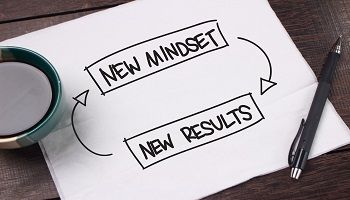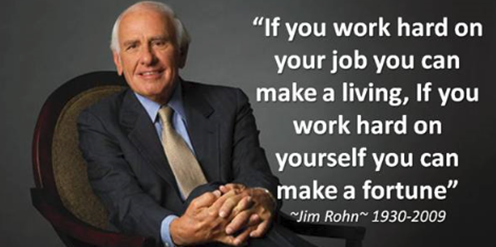Putting Your Money Where Your Mouth Is
10 reasons I can think of that a company might try to avoid giving a raise/promotion:
- Budget constraints: The company may not have the financial resources to offer a raise.
- Performance issues: The employee’s performance may not meet the company’s standards.
- Market rates: The company may believe that the employee’s compensation is already in line with market rates.
- Company policy: The company may have strict policies about when raises can be given or how much they can be.
- Lack of value perceived: The company may not see the value in offering a raise to the employee.
- Poor communication: The company may not communicate clearly with employees about what it takes to earn a raise or how the process works.
- Fear of setting a precedent: The company may worry that giving a raise to one employee will set a precedent for others to ask for raises as well.
- Limited growth opportunities: The company may not have a clear path for career growth or upward mobility, making it harder to offer raises as an incentive.
- Profitability concerns: The company may be focused on maintaining profits and may be hesitant to allocate resources towards raises, even if employees deserve them.
- Internal politics: A jealous manager or supervisor may feel threatened by an employee’s potential and may try to block a promotion to avoid losing their own position.
Did you know that 75% of employees who leave their jobs cite lack of recognition as the reason? Or that a striking 82% of employees feel that they don’t get recognized for their work?! To be honest it doesn’t really surprise me… Effective leaders play a vital role in the success of any organization. They understand the importance of creating a positive work environment, fostering employee engagement, and promoting professional growth. By investing in their employees’ development, they show that they value their contributions and are committed to their continued success. Promotions and raises based on performance and capabilities are tangible ways for leaders to recognize and show their employees that they are valued.
The problem is many leaders think they are recognizing their employees through providing professional development opportunities and sending “thank you” emails. Professional development and recognition are not interchangeable. While training programs and skill development opportunities are important, promotions and raises are essential for employees to feel that their hard work and loyalty are recognized and appreciated. Of course, it is not the only thing that matters, but it seems to be underappreciated in many cases! If employees can see a clear path to advancement and recognize that their hard work and dedication will be rewarded, it can create a sense of purpose and commitment to the organization.
I once had a manager who told me that in my current position I was performing at the highest levels and that based on the projects I had taken on recently, it was justified to get a promotion. However, she went on to explain, she didn’t feel it was appropriate or reasonable to ask for a promotion within the first 1.5-2 years. While I respected her perspective, I also felt frustrated that my hard work and dedication weren’t recognized beyond verbal praise. When I asked for the promotion, she shouldn’t have stood on principle but instead she could’ve used it as an opportunity to build a loyal employee. If she had beat me to the punch, no doubt that would be even better.
Promotions and raises based on performance and capabilities are vital for employees to feel that their hard work and loyalty are recognized and appreciated. A promotion or raise is not just a financial reward; it is a visible sign that the company is investing in its employees and sees potential in their continued growth. This recognition motivates employees to work even harder and foster a culture of excellence and not to be understated, loyalty.
Advertisement
[widget id=”custom_html-68″]
The traditional mindset of basing promotions and raises on tenure is no longer valid in today’s fast-paced work environment. Employees today have access to a vast amount of information about comparable jobs and salaries. They can easily research and compare their current pay and benefits to what they could receive elsewhere. This comparison can either be a disadvantage or an advantage for an organization. If an employee sees that they could be making more money and receiving better benefits elsewhere, it may lead to disengagement, and eventually, the employee leaving the company. On the other hand, if an employee sees that they are being compensated fairly and could have worse benefits elsewhere, it can increase their engagement and loyalty to the organization.
Professional development and promotions go hand in hand. It’s crucial to provide employees with skill development opportunities, but it’s equally important to promote and encourage growth and hard work. Employees who excel in their current roles should be given the opportunity to advance their careers. Doing so fosters a sense of loyalty and commitment to the organization and ensures that employees remain engaged and invested in their work.
Despite the best intentions of many leaders, there can be barriers to implementing recognition and reward programs. Some leaders may lack the authority to make these decisions, while others may lack the resources to provide meaningful recognition and rewards. While some leaders may feel powerless in their positions to effect change, it’s important to fight for recognition and professional development opportunities for employees. Every effort counts and can contribute to a more positive and productive workplace culture.
How many of those 10 reasons a company might try to avoid giving a raise still seem reasonable?
In the end, we are all leaders in some way or another. We all have the power to influence those around us and create positive change. Whether we work alongside someone who deserves recognition, or we have the ability to make changes in our management philosophy, we should all strive to invest in the people around us. If you’ve felt a sense of agreement or even frustration while reading this, then you already have the permission to take action. Start small by advocating for a colleague or an employee’s promotion or raise, let’s see where it takes you…







